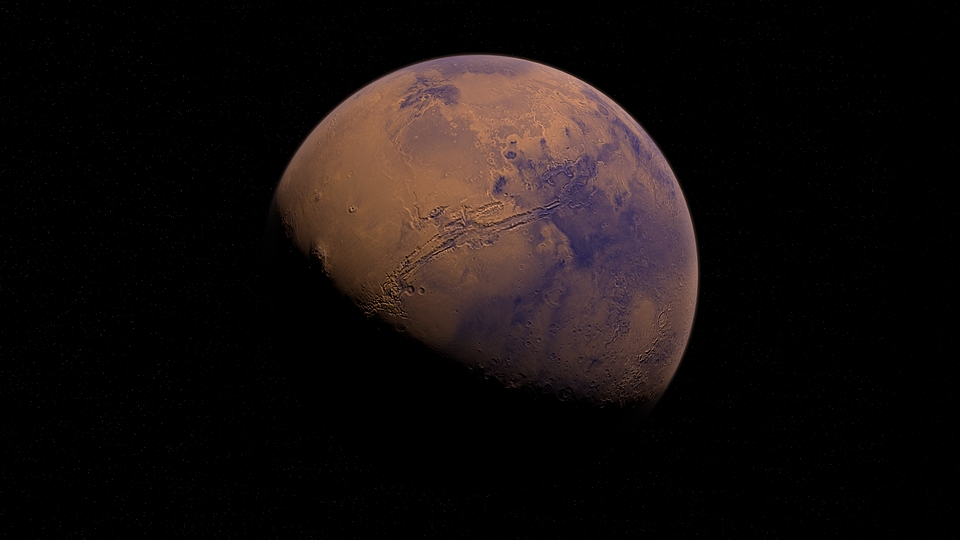NASA is currently preparing for its upcoming missions both to the Moon and to Mars along with its other upcoming launches in between. The agency recently released photos taken by its Mars Reconnaissance Orbiter, showing what looks like the remnants of an avalanche that occurred on the Red Planet.
The Mars Reconnaissance Orbiter or MRO continues to give astronomers and NASA further understanding of the Red Planet as it observes the phenomena that may be occurring in the landscape. With the use of its HiRISE camera, the MRO snapped an avalanche on the Martian terrain, falling off a 1,640 feet high cliff. The recent photos that were taken by the MRO also reveal a bit of Mars’ north pole and what the polar region looks like in its supposed spring season. NASA says the avalanche was triggered by the Red Planet’s changing temperatures during its spring.
“As temperatures increase and vaporize ice, the destabilized ice blocks break loose and kicks-up dust,” said the space agency.
NASA successfully launched its Perseverance Rover, which is on its way to Mars at the moment and is expected to touch down by February 2021. The rover will be tasked to search for life forms or remains of life forms on the Martian terrain, as the agency’s effort to see if there is life or if there was once life on the Red Planet.
However, it seems like it is not just Mars that could potentially be home to life, but other exoplanets in the universe as well may be boasting habitable conditions. According to a new study, other star systems in the universe may be hosts to up to seven exoplanets that have the same conditions as Earth.
The researchers of the study also believe that it may be because of a gas giant similar to Jupiter that could play a big role in these Earth-like exoplanets. Professor Stephen Kane of the University of California Riverside focused on one particular star system Trappist-1. This star system has three Earth-like exoplanets in the part known as the habitable zone. Professor Kane expressed curiosity regarding the number of Earth-like exoplanets in the universe, feeling that it did not seem to be fair that our own Solar System has only one.



 Spacesuits need a major upgrade for the next phase of exploration
Spacesuits need a major upgrade for the next phase of exploration  Larger and more frequent solar storms will make for potential disruptions and spectacular auroras on Earth
Larger and more frequent solar storms will make for potential disruptions and spectacular auroras on Earth  Genetic diseases: How scientists are working to make DNA repair (almost) a piece of cake
Genetic diseases: How scientists are working to make DNA repair (almost) a piece of cake  Dark energy is one of the biggest puzzles in science and we're now a step closer to understanding it
Dark energy is one of the biggest puzzles in science and we're now a step closer to understanding it  If life exists on Jupiter’s moon Europa, scientists might soon be able to detect it
If life exists on Jupiter’s moon Europa, scientists might soon be able to detect it  What is minoxidil, the anti-balding hair growth treatment? Here’s what the science says
What is minoxidil, the anti-balding hair growth treatment? Here’s what the science says  Six space missions to look forward to in 2024
Six space missions to look forward to in 2024  The brightest object in the universe is a black hole that eats a star a day
The brightest object in the universe is a black hole that eats a star a day  Tatahouine: 'Star Wars meteorite' sheds light on the early Solar System
Tatahouine: 'Star Wars meteorite' sheds light on the early Solar System  The mystery of consciousness shows there may be a limit to what science alone can achieve
The mystery of consciousness shows there may be a limit to what science alone can achieve  Archeoastronomy uses the rare times and places of previous total solar eclipses to help us measure history
Archeoastronomy uses the rare times and places of previous total solar eclipses to help us measure history  Customizing mRNA is easy, and that's what makes it the next frontier for personalized medicine − a molecular biologist explains
Customizing mRNA is easy, and that's what makes it the next frontier for personalized medicine − a molecular biologist explains  Synthetic human embryos let researchers study early development while sidestepping ethical and logistical hurdles
Synthetic human embryos let researchers study early development while sidestepping ethical and logistical hurdles  Orbital resonance − the striking gravitational dance done by planets with aligning orbits
Orbital resonance − the striking gravitational dance done by planets with aligning orbits  The rising flood of space junk is a risk to us on Earth – and governments are on the hook
The rising flood of space junk is a risk to us on Earth – and governments are on the hook 





























